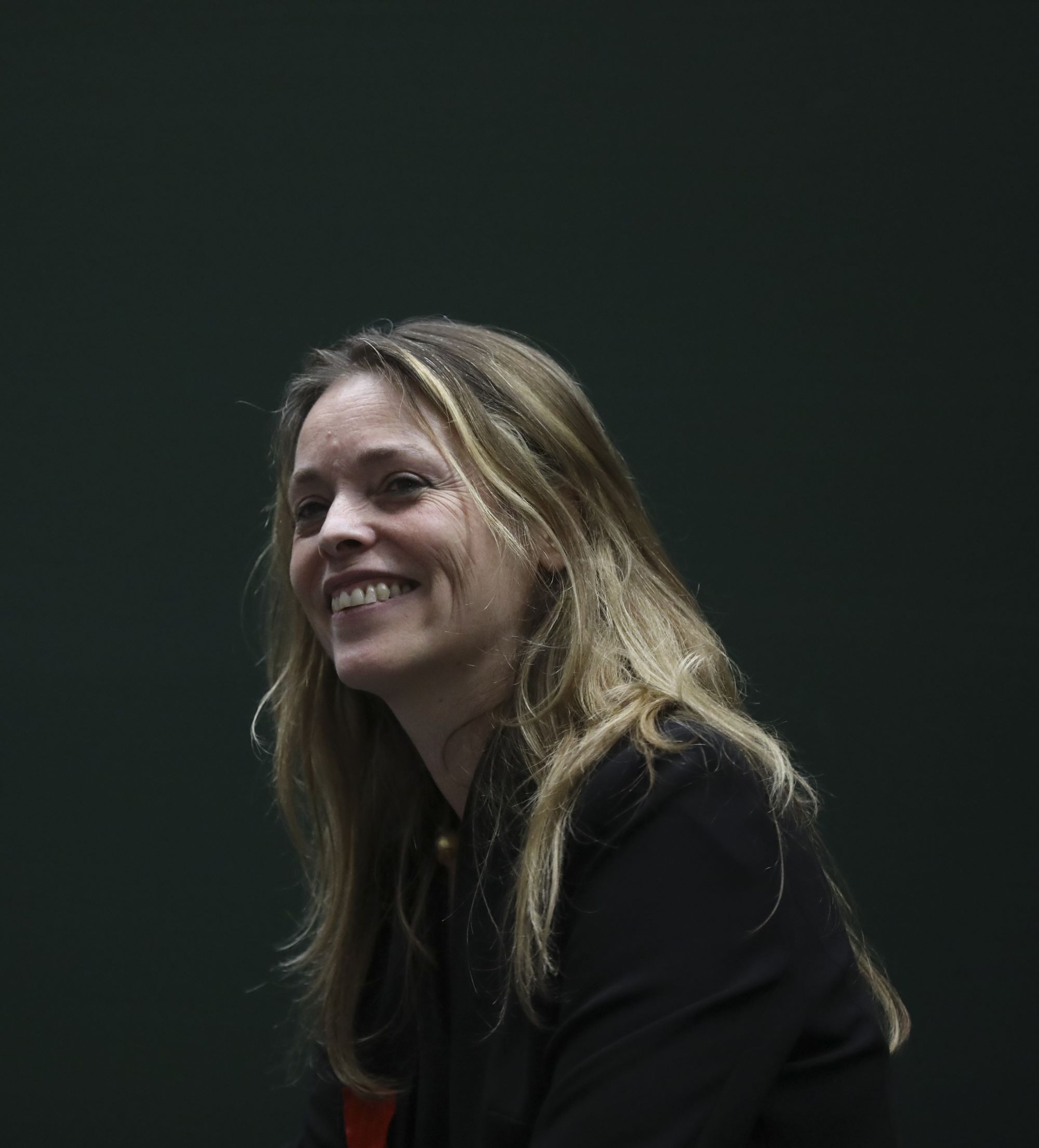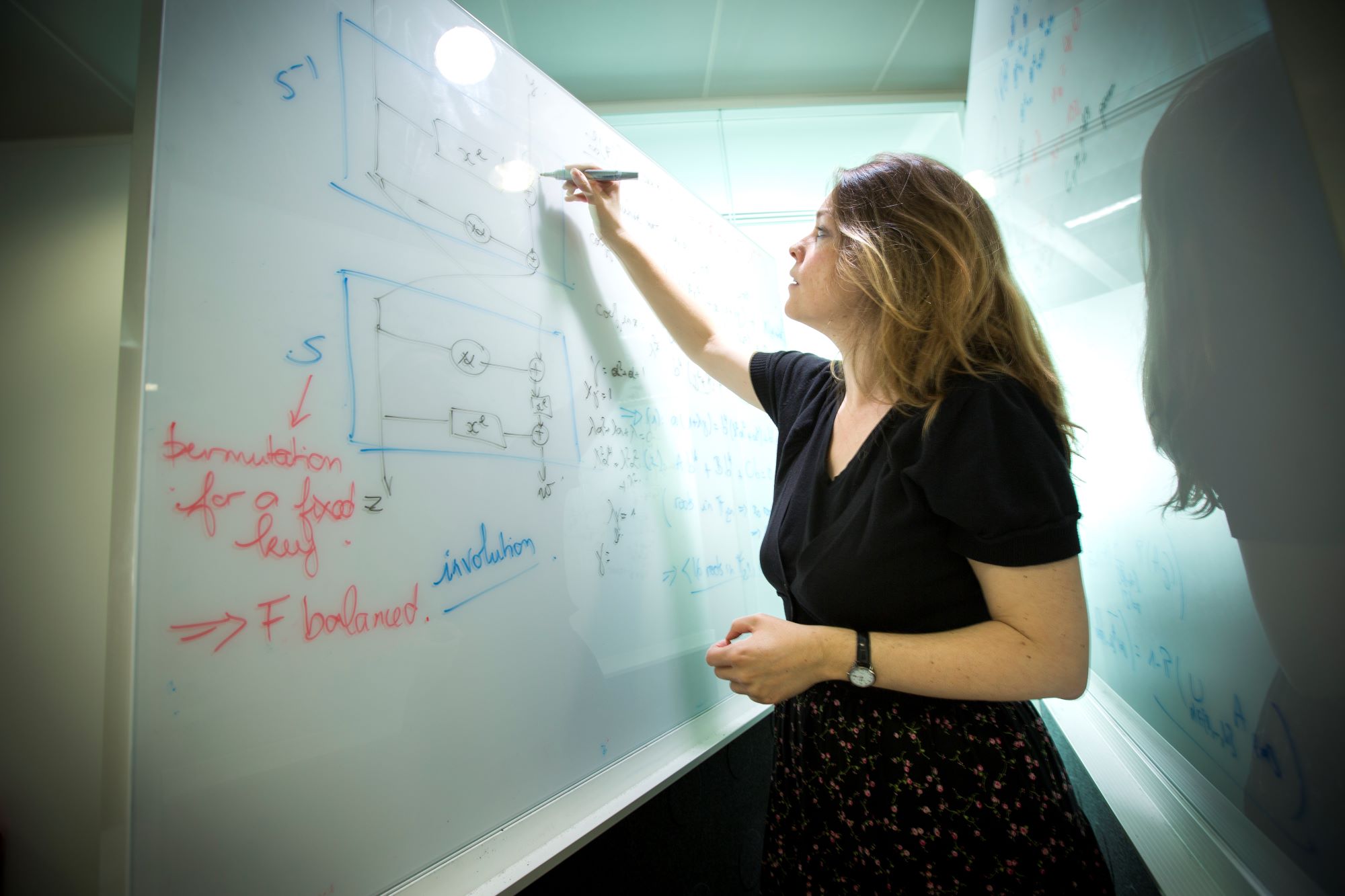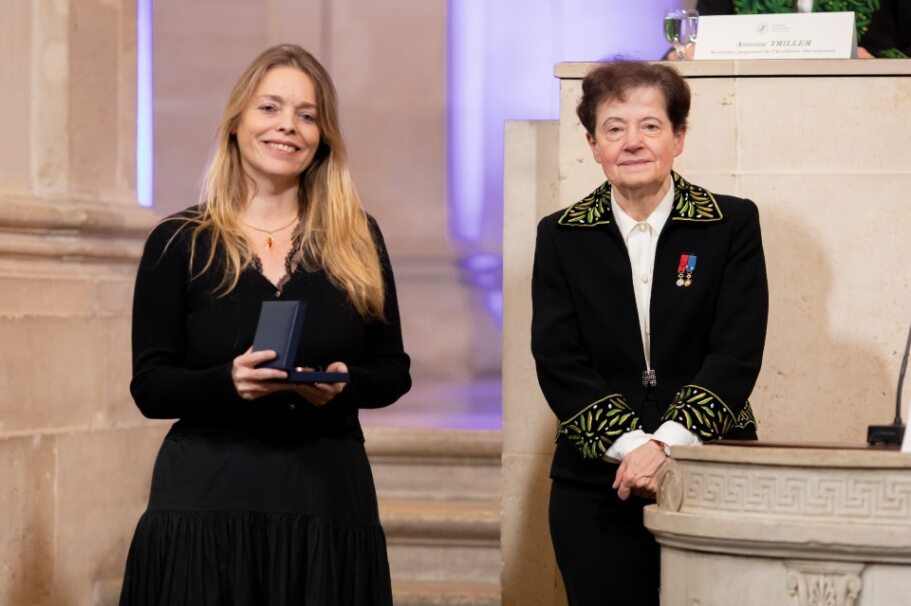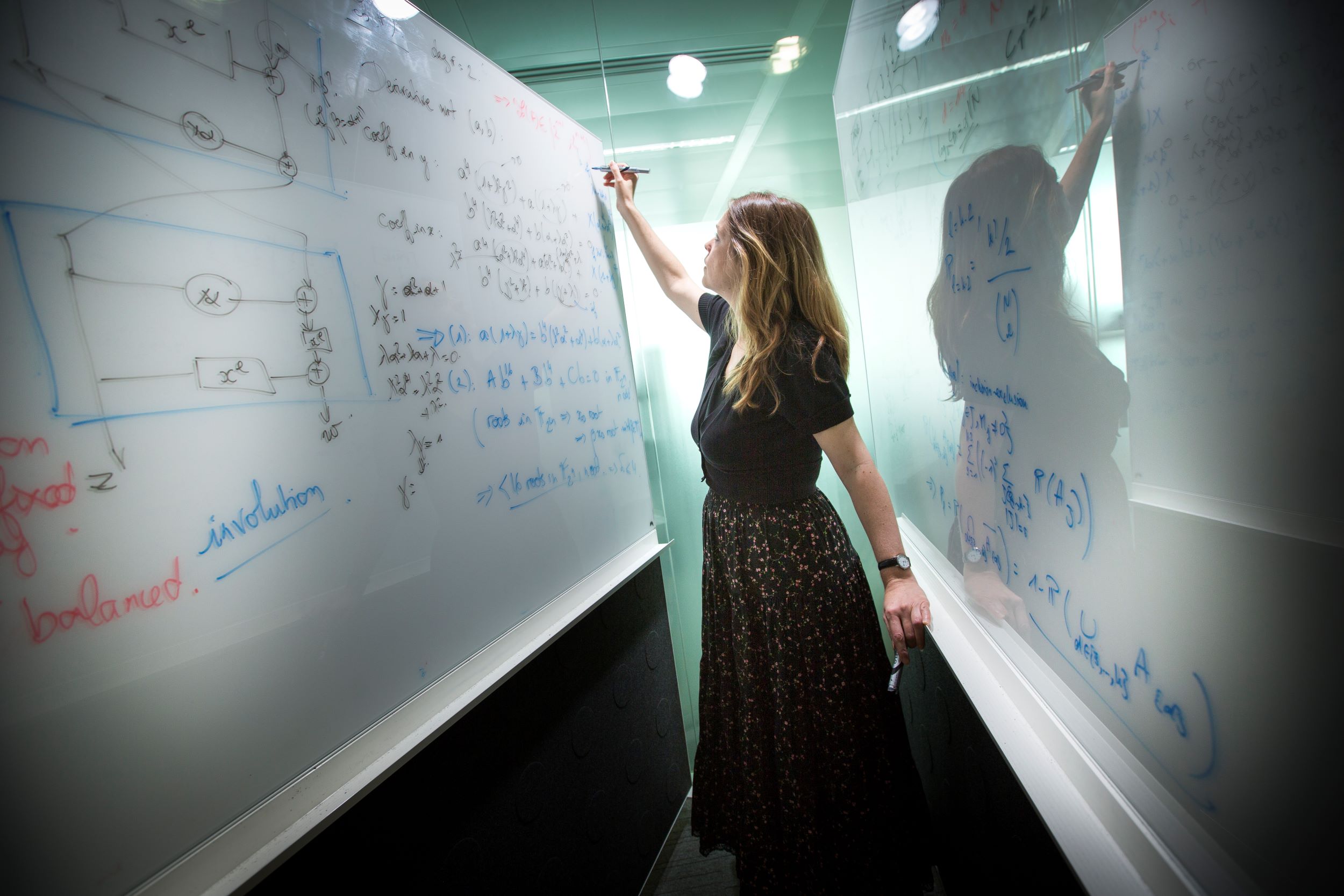Anne Canteaut is the story of a high school student who didn't know what she wanted to do when she grew up, but was convinced that she would never, ever do computer science! A good student, she was admitted to both literary and scientific preparatory courses. In the end, she chose the latter, at Lycée Faidherbe in Lille.
Then came the competitive entrance exams, and the ranking of choices for schools. As certain as ever of her aversion to computer science, Anne Canteaut made some radical choices: "I had put the schools where I thought computer science would be at the very bottom of my list!"
During an information session at her preparatory school, a former student spoke enthusiastically about ENSTA Paris, and in particular about the strength of the mathematics program in the first year. "But he was careful not to tell me that computer science was also part of the curriculum," she smiles. "In the end, it was at ENSTA Paris that I discovered computer science... and I thought it was fantastic! So much so that I decided to go into research in this field...".
Computer science isn't the only thing Anne Canteaut discovered at ENSTA Paris. "I owe a lot to the school. I discovered everything I do today, especially research, thanks to both the first-year internship and the 2nd-year research project. It was decisive for my career."
Anne Canteaut still remembers how much she appreciated both the solidity of the scientific teaching and the cultural aspects. "For me, who had hesitated between a literary and a scientific preparatory course, taking literature or art history classes in an engineering school was a very pleasant surprise. It was a wonderful cultural opening."
By the 2nd year, Anne Canteaut knew she wanted to go into research. In 3rd year, she applied for thesis funding from the DGA. "Once I was guaranteed funding, it was of course much easier to find a subject and a host laboratory. I wanted to do something at the interface between mathematics and computer science. Cryptography fitted that description perfectly, with real societal issues at stake."
In the end, it was a researcher at an INRIA laboratory in Rocquencourt who proposed a pioneering thesis topic on a category of encryption systems known as "post-quantum", capable of withstanding the eventual development of a quantum computer.
Even today, Anne Canteaut's core business is to understand how to guarantee the long-term protection of our data, as digital technology becomes an ever greater part of our lives. And to do this, nothing beats understanding how to "break" encryption codes.
"My work literally consists of crash-testing encryption systems, then finding the mathematical property that allowed them to be decrypted. This leads to new design criteria that make subsequent generations more robust. It's a never-ending job, because there are always new ideas and new techniques to try and break these systems."
If you suggest to Anne Canteaut that she's some kind of computer pirate, she replies with a big smile: "I'm from Dunkerque, an old privateer town, not a pirate! On a more serious note, it's essential that there is public research in this field, that there are benevolent researchers who find the loopholes and help to close them. It's a constant vigil."
An activity so essential that it has just earned her the Irène Joliot-Curie prize for Woman Scientist of the Year, awarded by the French Academy of Sciences.
"This prize means a great deal to me. Firstly, it serves as a reminder of the importance of my discipline at a time when data is everywhere, and protecting it has never been such a crucial issue. On a personal level, this is of course a source of great pride, but I'd like to stress that none of this would have been possible without the colleagues and PhD students I've been lucky enough to work with. All too often, we tend to forget that research is above all a collective effort."
With this recognition of computer science as a discipline at the heart of contemporary issues, Anne Canteaut hopes to attract new generations of students to her field.
"We often only remember the dehumanizing effects of IT. My responsibility is to explain what we can do as citizens to avoid this, and to contribute our expertise to counter all the risks and negative effects of new technologies."
It's a responsibility she assumes by regularly taking part in events organized by associations such as Animath, Femmes et sciences, or the Rendez-vous des jeunes mathématiciennes et informaticiennes, to help young women realize that they have a rightful place in scientific studies.
She often encounters young women who are resistant to computer science. So, without making any grand speeches, she simply tells them her own story, that of the high-school girl who didn't want to go into computing. And the astonished smiles she arouses, rich with new horizons, are her greatest reward.




